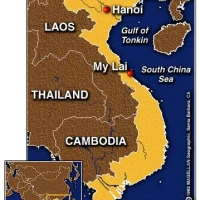On August 31, 1944, the British 8th Army breaks through the Germans’ “Gothic Line,” a defensive line drawn across northern Italy.
 The Allies had pushed the German occupying troops on the Italian peninsula farther and farther north. On June 4, U.S. Gen. Mark Clark had captured Rome. Now the Germans had dug in north of Florence.
The Allies had pushed the German occupying troops on the Italian peninsula farther and farther north. On June 4, U.S. Gen. Mark Clark had captured Rome. Now the Germans had dug in north of Florence.
Built earlier in the year, this defensive line consisted of fortified towns, stretching from Pisa in the west to Pesaro in the east. One of these towns was Siena, home to much glorious medieval art—also home to the Italian partisans, guerillas who had been harassing the Germans and remnants of Italian fascists since Italy had surrendered. Their ability to create chaos and confusion behind the Germans’ own lines was of great aid to the Allies.
Expert strategic maneuvering by British General Harold Alexander, who opened his offensive on August 25, surprised the Germans, and the 8th Army swept through the Plain of Lombardy, crashing through the Gothic Line.



 Check out my other blog
Check out my other blog I'M PUBLISHED
I'M PUBLISHED I'm Published Again
I'm Published Again









Reading the battles that you place here and the skirmishes, it amazes me how much luck was on our side in so many cases. The reliance on the Italian partisans when, a few years before, most were for Il Duce. The arrogance of the Germans, in some cases, where they were taken off guard. It is very interesting
LikeLike